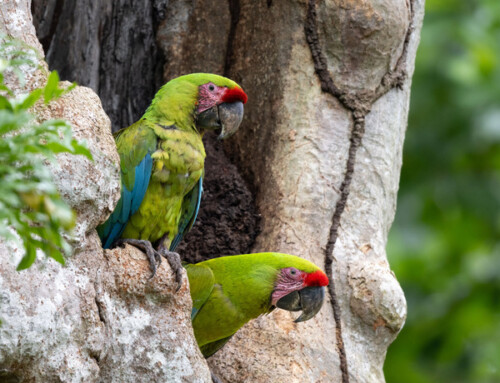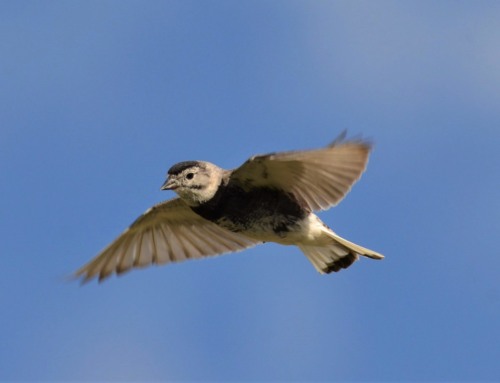LINKED PAPER
Plasticity in nesting adaptations of a tidal marsh endemic bird. Benvenuti, B., Walsh, J., O’Brien, K.M., & Kovach, A.I. 2018. Ecology and Evolution. DOI: 10.1002/ece3.4528. VIEW
Nest site selection in birds should enhance the survival and fitness of offspring in addition to the reproductive success of the parent. It is typically beneficial for parents to be able to assess specific nest site attributes in relation to potential risks. This may be a learned adaptation that helps mitigate nest failure. For instance, it may be adaptive for a breeding bird to move away from an area of high predation or make changes in nest structure to reduce the risk of failure.
Such plasticity in nesting behaviour may be adaptive in birds that nest in tidal marshes. Nest flooding and predation are competing risks that influence the nesting behaviour, including placement of nests, by tidal marsh birds. Nests that are built too high in the marsh grasses are more likely to experience predation, because they are more visible to mammalian and avian predators, than those that are built lower and concealed by dense vegetation or a constructed canopy. Conversely, nests constructed too low to the marsh surface are more likely to sustain flooding during the lunar high tide events, which periodically inundate the marsh. Thus, optimal nest placement for birds that nest in tidal marshes requires balancing the competing risks of predation and flooding. It may in turn be adaptive for these birds to perceive the relative risks of these two causes of nest failure and alter their behaviour accordingly.
We investigated nesting plasticity in the saltmarsh sparrow (Ammospiza caudacuta), a tidal marsh bird with reproduction strongly influenced by nest site selection. These sparrows build their nests in the marsh grasses just above the mean high water level. Saltmarsh sparrow reproduction is adapted to fit within the lunar tidal cycle. Females construct a nest and lay and incubate the eggs within about 15 days, giving the chicks only a few days of growing before the highest tides approach (approximately every 28 days). Due to the high rates of nest failure associated with flooding, a female saltmarsh sparrow may construct and tend to up to 3 nests within a single breeding season in order to raise a successful clutch.

We studied populations of saltmarsh sparrows in the northeastern United States to see if females modify their nesting behaviours based on their prior experiences. Specifically, we tested whether nest characteristics differed among females with different nest fates (fledged, flooded, depredated), and if females made changes in nest structure or placement (i.e. location within a marsh) based on the outcome of their previous nesting attempt.
We found that the structural characteristics of nests differed among nests with different fates. Successful and depredated nests were built higher in the vegetation and in higher elevation areas of the marsh than those that flooded. Additionally, successful nests had a greater proportion of canopy cover than those that experienced flooding or depredation. But did females change their nesting behaviour based on prior experience? We found that they did. Specifically, our research showed that female saltmarsh sparrows changed the construction of their nest following a nest failure. For example, females that experienced failure due to flooding constructed nests higher in the vegetation and in areas of higher elevation in subsequent nesting attempts, thus adopting behaviours to mitigate flooding. Females that experienced depredation decreased the height of their nest, thereby minimizing visibility to predators. Ultimately, this suggests that female saltmarsh sparrows adapt their nesting behaviour in response to prior experience.

We also found that female saltmarsh sparrows exhibited nest placement fidelity – nesting in the same locations of the marsh, sometimes within a few meters, year after year. For those females that renested, the distance they moved between nesting attempts both within and across years varied according to their prior nest fate. For instance, females that experience depredation moved further from their previous nesting attempt than those that were successful or failed due to flooding. Females that were successful or failed due to flooding in their previous nesting attempt tended to renest closer to their prior nest.

Despite this evidence that females can make adaptive changes in their nest structure and placement to reduce the risk of nest failure, this plasticity may be insufficient in the face of increased flooding predicted with sea-level rise. Tidal marshes across the Atlantic Coast of the United States are being lost at a rapid rate due to sea-level rise, leaving the species that rely on this habitat vulnerable to drastic population declines. Saltmarsh sparrows across their range are experiencing low reproductive success due to nest flooding (Bayard and Elphick, 2011) and rapid population declines (Correll et al., 2016), which leave them vulnerable to extinction within the next 50 years (Field et al. 2016, 2017). Although the observed plasticity in nesting behaviour may not be enough to outpace sea-level rise, saltmarsh sparrows appear to have the ability to respond to management interventions targeted to mitigate nest flooding.
The research described in this article is part of a larger collaborative effort by the Saltmarsh Habitat and Avian Research Program, a group of academic, governmental, and non-profit collaborators gathering information to conserve tidal marsh birds in the northeastern United States. To learn more about this and other research on tidal marsh birds visit www.tidalmarshbirds.org. The findings and conclusions of this article are those of the authors and do not necessarily represent the views of the USFWS or any other funding agency.
References
Bayard, T.S. & Elphick, C.S. 2011. Planning for sea-level rise: quantifying patterns of saltmarsh sparrow (Ammodramus caudacutus) nest flooding under current sea-level conditions. Auk 128: 393–403. VIEW
Correll, M.D., W.A. Wiest, B.J. Olsen, W.G. Shriver, C.S. Elphick & Hodgman, T.P. 2016. Habitat specialization explains avian persistence in tidal marshes. Ecosphere 7(11): 1-13. VIEW
Field, C.R., T. Bayard, C. Gjerdrum, J.M. Hill, S. Meiman & Elphick, C.S. 2016. High-resolution tide projections reveal extinction threshold in response to sea-level rise. Global Change Biology 35: 2058–2070. VIEW
Field, C.R., K.J. Ruskin, B. Benvenuti, A. Borowske, J.B. Cohen, L. Garey, T.P. Hodgman, R.A. Kern, E. King, A.R. Kocek, A.I. Kovach, K.M. O’Brien, B.J. Olsen, N. Pau, S.G. Roberts, E. Shelly, W.G. Shriver, J. Walsh & Elphick, C.S. 2017. Quantifying the importance of geographic replication and representativeness when estimating demographic rates, using a coastal species as a case study. Ecography 41: 971-981. VIEW
Image credits
Featured image: Adult saltmarsh sparrow (Ammospiza caudacuta) © Nancy J. Landry




